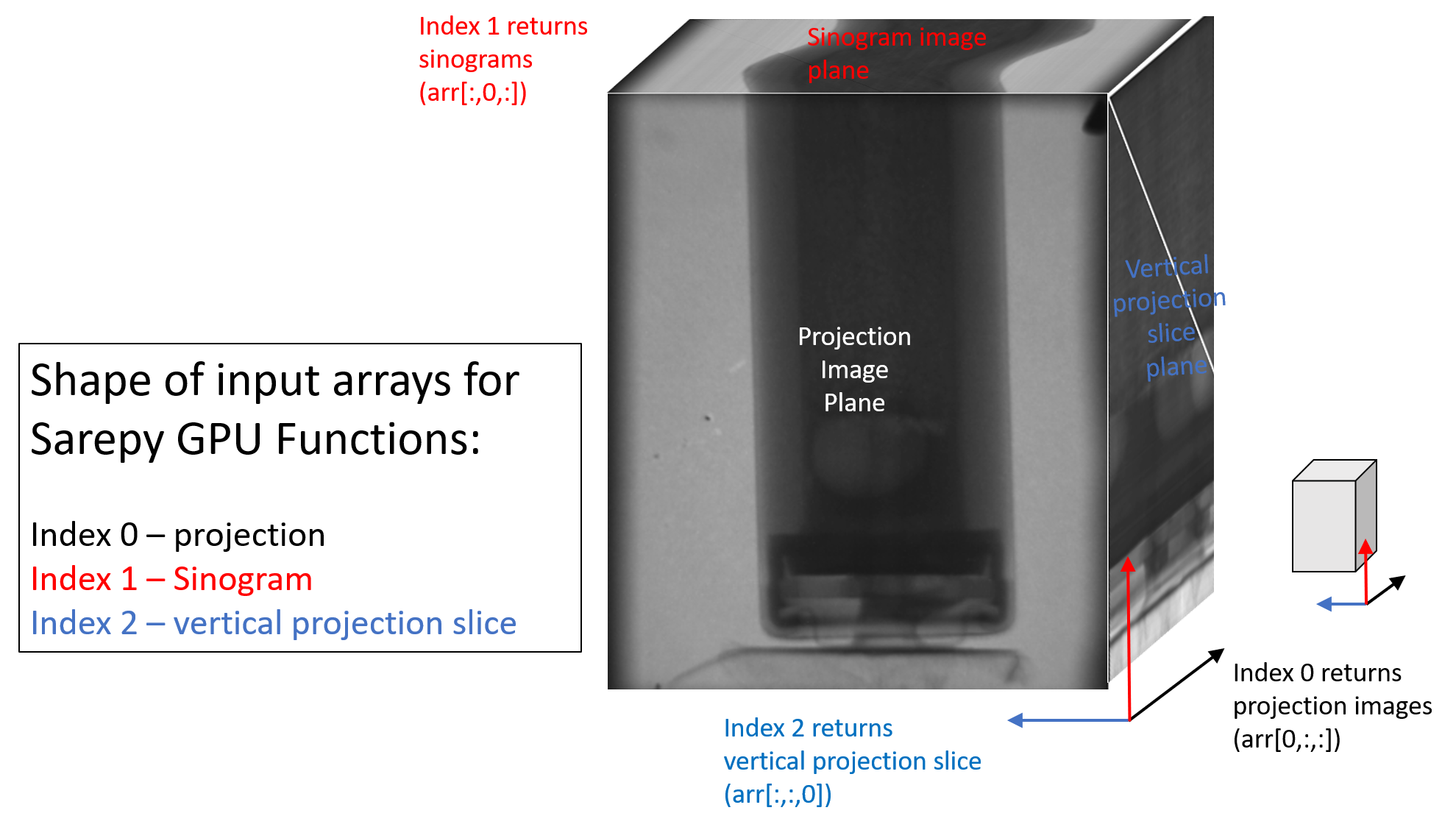KEEP IT SIMPLE STUPID: This should mostly just be functions, unless a class is really appropriate, it will be simpler most of the time to just deal with numpy arrays.
Default dtype for everything: np.float32 (equivalent to cp.float32)
The most natural way to represent projection image stack as 3D arrays:
- index 1 = Image index (in the stack)
- index 2 = Column
- index 3 = Row
Need to think about a consistent image representation!
cy_im_utils is the root
branch tier 1:
- Prep? -> All high performance
- GPU data reduction pipeline? (Radiographs -> Attenuation?)
- Field
- Imread -> Dask?
- extract norm patch
- Extract?
- patch_slice
- Visualization
- template for an interactive plot
- patch plotting
- nif_99to01contrast
- modified this to quantiles
- statistical testing
- Patch_extract
My adaptation of Vo et. al's SAREPY. Here are a few considerations for possible efficiency boosts:
- All sarepy functions make a copy (i.e. not in-place)
- should this be a conditional or just hard code in-place operations?
- Vo's code always makes a copy
- nd_interp2d is a function to replace scipy.interpolate.interp2d
- this function is a bit hacky, but doesn't seem to be terribly inefficient.
- a vectorized version of this would make me feel better
- detect_stripe_GPU has a for loop over all the sinograms that can easily be turned into a kernel
- I haven't done much testing to see if my default threads_per_block (8,8,8) is optimized
SAREPY GPU array format.
First of all, your thread block size should always be a multiple of 32, because kernels issue instructions in warps (32 threads).
<<<a,b>>>
- a = number of thread blocks
- b = threads in a thread block
This will execute (add) once per thread rather than spreading hte computation across the parallel threads
add<<<1,256>>>(N,x,y)
Together, the blocks of parallel threads make up what is known as the grid. Since I have N elements to process, and 256 threads per block, I just need to calculate the number of blocks to get at least N threads. I simply divide N by the block size (being careful to round up in case N is not a multiple of blockSize).
int N = 1<<20;
int blockSize = 256;
int numBlocks = (N+blockSize-1) / blockSize;
add<<<numBlocks, blockSize>>>(N,x,y);
